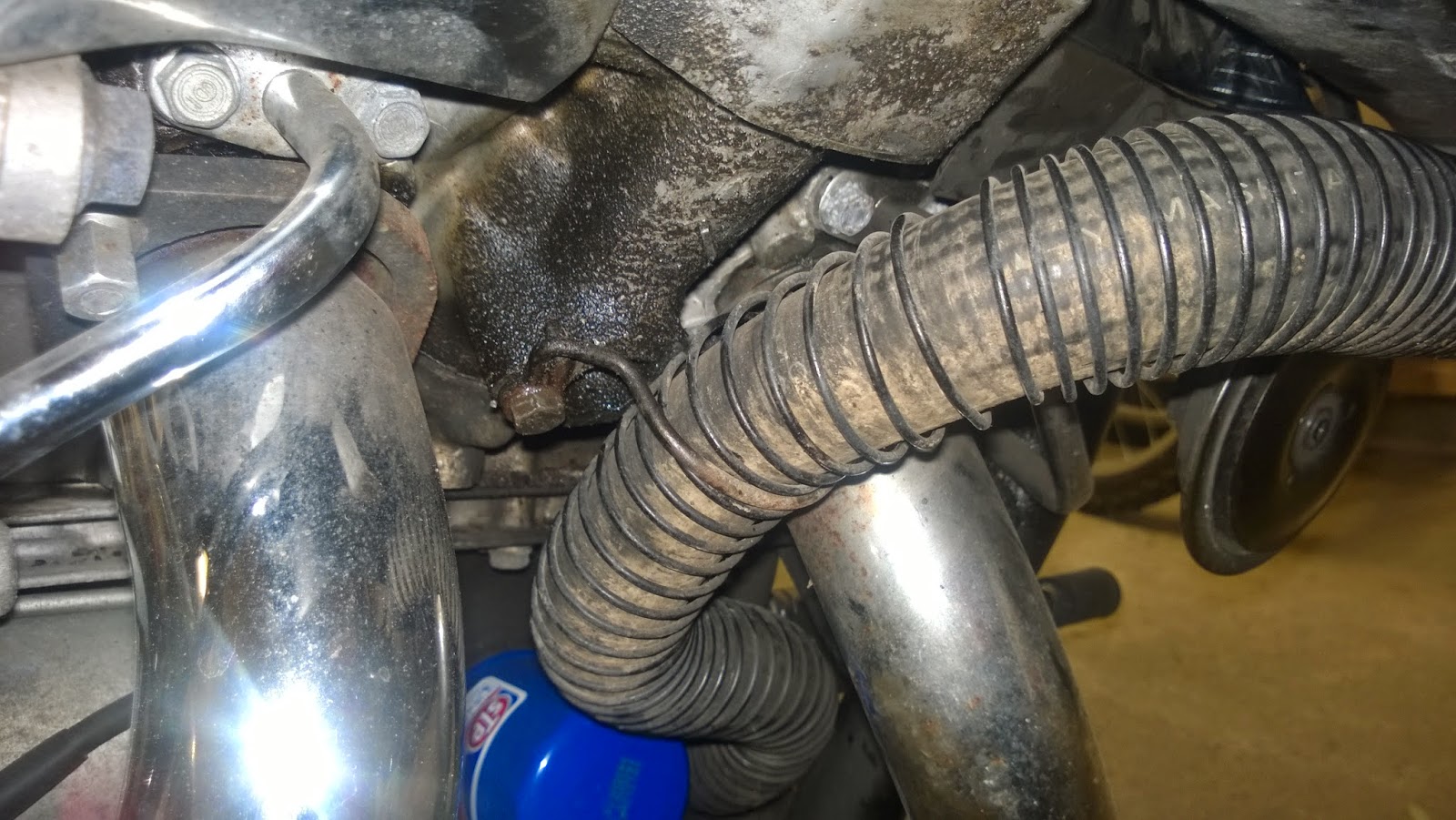Changing the coolant on the third generation Honda Magna is fairly easy. Here is my documented process.
 |
| This radiator needs a little lovin'! |
Schedule
Every 2 years or 24,000 miles
2.5 quarts (2.4 L) Pro Honda HP coolant
Tools
12 mm wrench
14 mm wrench
10 mm socket
extension bar
socket wrench
hex allen wrench
catch pan capable of at least 2.5 quarts
medium Philips screw driver
Time
This procedure takes about an hour to complete.
Procedure
1. Remove the clutch cable on the lower, left side of the bike by loosening the left nut, sliding the cable holder to the right, and pulling the cable from the clutch mechanism.
1a. Using a 12 mm wrench, hold the right nut on the bracket in place.
1b. Loosen the left nut using a 14 mm wrench. If you do not more the 12 mm nut, you will not need to adjust the clutch later.
1c. Pull cable out of clutch mechanism.
 |
| Clutch bracket on left. Cluster mechanism on right. |
2. Pull off the chrome housing by removing the 3 hex allen bolts. They are 3 different sizes so keep track of where each belongs.
 |
| Chrome housing held by three hex allen bolts |
3. Position catch pan under bike.
4. Remove the water pump drain bolt with a 10 mm socket. A surprisingly little amount of coolant will come out!
 |
| Water pump drain plug location circled |
6. After draining is complete, move the catch pan and remove the two cylinder drain screws. I was able to use a 10 mm socket with extension bar on the right side when facing the engine. On the other side, I had to use a small 1/4 inch wrench with a small 10 mm socket. You will get perhaps a pint of coolant out of each cylinder bank.
 |
| Left cylinder coolant drain bolt (from front) |
 |
| Right cylinder coolant drain bolt (from front) |
8. Replace the drain plug on the water pump.
9. Put the chrome cover back in place.
 |
| This is the clutch shaft.... |
10. Push the clutch cable back into the clutch mechanism.
11. On the cable bracket, tighten the 14 mm nut while holding the 12 mm nut steady. Remember that keeping the nut in place will prevent the need of cable adjustment.
12. Fill radiator with coolant.
13. With cap off, start the engine. Let it run for about 20 seconds.
14. Add more coolant until it is full.
15. Run the engine.
16. Let it run for a minute. If coolant level drops, add more. Our goal is to remove any air from the cooling system.
17. Blip the throttle a few times. The coolant level will decrease a bit and more air will be expelled.
18. Let engine run until it is full warm or the coolant starts to overflow. Tighten any bolts if coolant is leaking.
19. Remove right side cover.
20. Add coolant to the overflow reservoir. You want it to be over the minimum shown on the plastic bottle.
 |
| Coolant reservoir is just below tool storage area |
21. Reinstall right side cover.
22. Ride it!
Happy Riding!











